While the Spanish Authi kept its model in force until 1975 by combining the different trim levels with several different engine blocks, the Italians at Innocenti began to develop a new vehicle to replace the classic Mini at the end of the 60s, which would lead to the Innocenti Nuova Mini that is the subject of this article.
The production of the Mini under license from the British Motor Company (BMC) more or less fulfilled the brand's commercial expectations, but the then president of the Lambrate-based company, Luigi Innocenti, son of the founder, dreamed of developing a vehicle that would be designed and built entirely in Italy. To bring this project to life, Innocenti was assisted by such prestigious names as Nuccio Bertone and Giovanni Michelotti, who agreed on the need to create a vehicle to replace the classic Mini, which was already starting to become somewhat outdated in the face of more modern models such as the arch-rival Autobianchi A112.
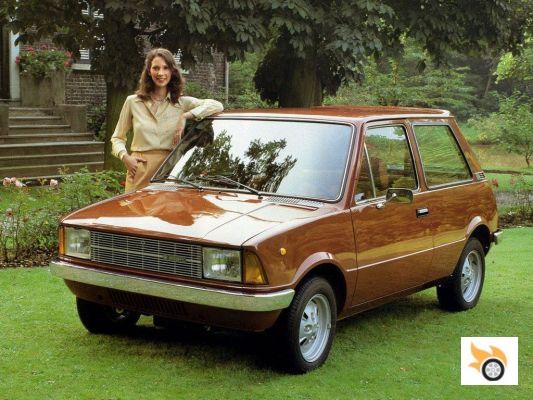
Although it can be said that the economic situation of the brand was always quite delicate, in the late sixties they went through a new mild crisis that forced to cancel the project. This would be rescued in 1971 after the British BMC bought the Italian company and sent Goeffry Robinson to manage Innocenti, without having any news about the work in which the Italians were working to develop a new model that, in theory, would mean the end of the relationship with BMC.
I imagine that Robinson's surprise would be huge, but in the end he was convinced of the need to "modify a little" the classic Mini, especially to face models like the more practical Fiat 127 or the more elegant Autobianchi A112, guilty in some way of the decline in sales of the Innocenti Mini.
With some delay compared to the initial plan, the new model went on sale in 1974 under the name of Leyland Innocenti Mini.
The model presented had a body of just over three meters long signed by Bertone that was completely new, much more modern than the classic Innocenti Mini and showing the prevailing design lines of the seventies as the large glazed surfaces or the timidly rising waistline, details that brought enough light to a considerably spacious interior in relation to what its trimmed exterior could make you imagine. In addition, another notable innovation compared to its predecessor was the presence of a tailgate. However, the novelties ended just where the human eye could see them, because despite minor improvements such as engine tuning or the inclusion of better cooling systems, the mechanical basis of the Innocenti Nuova Mini was the same as that of the Innocenti Mini.
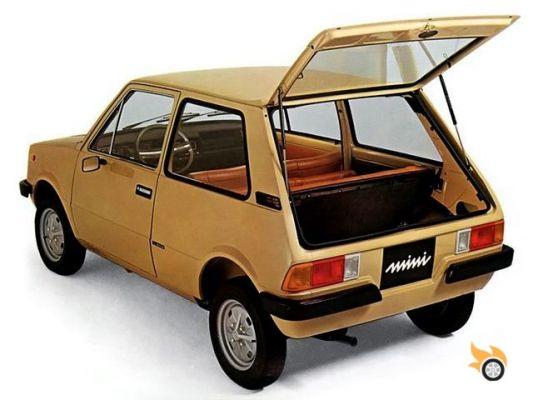
At the beginning of its commercialization, the Leyland Innocenti Mini had a somewhat high price. This however was not a big problem because both the press and the general public gave a good welcome to the car that would compete directly with the already named Autobianchi A112.
As already mentioned, the mechanical basis of this new urban car was the same as the Innocenti Mini and its initial offer was limited to the 90 (998 cc - 43 hp) and 120 (1,275 cc - 63 hp) models. In both cases the gearbox was a four-speed manual.
Despite the initial good reception, the vehicle could not reach the initial sales forecasts and not for lack of demand, but for lack of supply. Despite the not very good image that Innocenti had in the market, the real problems of this vehicle derived from the endemic economic mismanagement of the manufacturer accentuated by the oil crisis and the beginning of the decline of the BMC. All these factors generated a certain labour unrest and its continuous strikes generated delivery deadlines that were difficult for the company to meet in terms of accounting or for customers, who received their vehicles poorly finished and even with breakdowns deliberately generated on the assembly line.
This delicate situation ended up undermining the poor image of Leyland Innocenti, which ended in January 1976 with the sale of its 44% stake to the Italian company De Tomaso, which years earlier had bought Moto Guzzi and 30% of Maserati from Citroën. This new management and, why not say it, a new injection of capital, allowed the Innocenti Mini Bertone to reach its sales targets between 1977 and 1980, with peaks of success in 1978 and 1979.
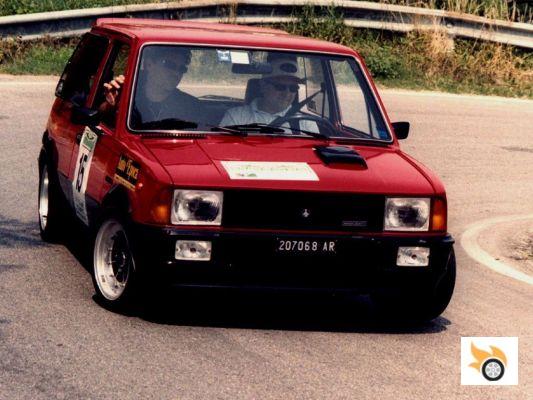
This success also led to a thorough restyling of the range, which began with a change in the name that eliminated any allusion to Leyland: Nuova Innocenti Mini. A second step was the improvement in the performance of the engines, which now offered 49 and 65 HP and could be combined not only with the known trim level but also with the new L, SL and De Tomaso; the latter with a sporty look in reference to the proprietary brand and which was combined exclusively with the most powerful engine, suitably revised to offer 71 HP. In addition, several limited series were periodically offered, which were very interesting from a commercial point of view but without major modifications beyond purely decorative ones.
In 1978, forty thousand units of the Nuova Innocenti Mini were put into circulation, which not only represented the success of this type of small, powerful and well-equipped vehicles, but also meant an important injection of capital for De Tomaso, an Italian manufacturer that, like Innocenti, always lived with constant economic problems. Incredibly, one of the models that brought the most profit to the company was precisely the sportier Nuova Innocenti Mini De Tomaso, which for 1978 improved the performance of its engine to 74 hp.
With very good commercial prospects, in 1978 began the export of the vehicle to other markets, mainly European. At this point I must clarify that the basic models, initially without commercial designation, could receive the name of Nuova Innocenti Mini N depending on the market in which they were marketed, thus accompanying the Mini L Export model that, despite its Italian manufacture, was never marketed in its country of origin because it referred to a trim level specifically adapted to each market.
Curiously, and despite the fact that in Italy the car had changed its name, in the other markets where it was marketed it did so under the name of Leyland Innocenti. The reason was the agreement De Tomaso reached with BMC to distribute the car through the English group's dealer network. As had happened in Italy, the car was very well received in the French market and met expectations in the Spanish, German and Benelux markets.
Such was the reception of the Nuova Innocenti Mini that the manufacturer decided to launch a new, even more exclusive trim level with a more refined interior and better quality materials. It was called the Nuova Innocenti Mini De Tomaso Special and became the most exclusive Nuova Innocenti Mini. It was available in black or red, had a specific exterior decoration and was equipped as standard with electric windows and 12" alloy wheels with an exclusive design.
Around this time, the project to launch an Innocenti with a five-door body began, but was finally abandoned.
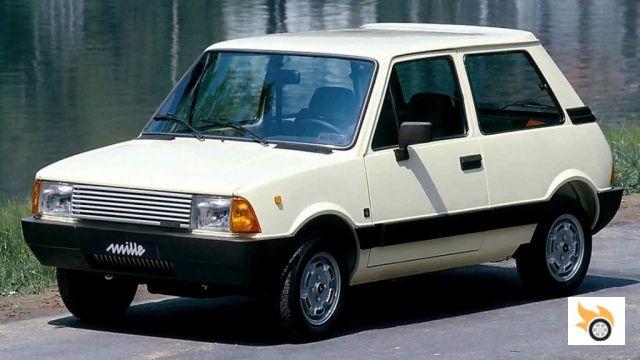
In 1980 the Mille version was introduced with important aesthetic innovations. Only available with the 998 cc engine, the Mille finish featured bumpers made of resin and plastic material, small details in the decoration of the front and rear and a completely redesigned interior with floor mats and velvet upholstery. Interestingly, many literatures claim that it was the Nuova Innocenti Mini Mille that was the first Italian city car to be fitted with electric front windows, although it was actually the 1979 Nuova Innocenti Mini De Tomaso Special.
The car maintained its sales figures at acceptable levels until the spring of 1981 when production of the 120 models suddenly ceased and the models marketed with the 998 cc block all adopted the aesthetics of the Mille version. The reason for this sudden change was due to the fact that at the end of 1981 the contract with BMC for the supply of engines was coming to an end and De Tomaso was already looking for new suppliers. In addition, the British were convinced that the success of the English Mini, the "original", would be repeated with their recently launched Austin Metro, which was fitted with the same engines.
At this juncture, De Tomaso turned to the Japanese Daihatsu to power his utility car, which was renamed Innocenti 3 Cilindri, leaving aside any allusion to both Leyland and Mini. In addition, in some European countries began to be distributed by the commercial network of Daihatsu.
As can be deduced from its name, the new block had three cylinders, something unheard of in Europe where the "cars" mounted blocks of four cylinders and the "City Cars" blocks of two cylinders. In any case, this new engine had the approval of the motor press thanks to the voluntariness of its 993 cc engine and 53 hp and fuel economy obtained thanks to the new five-speed manual transmission that was offered as standard equipment in any of the three trim levels: S, SL and SE.
In addition to a new engine, the Innocenti 3 Cilindri enjoyed a new McPherson type suspension layout that made the car much more comfortable and stable.
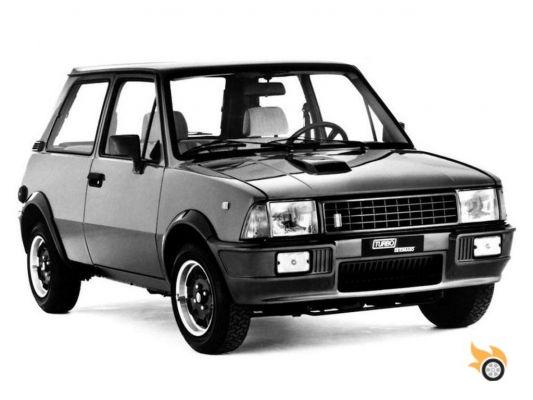
The following year the range was extended with the marketing of the Innocenti Turbo De Tomaso model, which became the first city car to be fitted with a turbo and, with only 75 HP, quickly became an icon of the 1980s.
The models produced from 1984 onwards were given a new commercial name, renamed Innocenti MiniTre. This change, which did not represent a major variation on the previous name, suggested that the manufacturer was already thinking about a slightly larger vehicle...
This change in the name did not bring changes in the vehicle beyond novelties such as the MiniMatic models, equipped with an automatic transmission with only two speeds, or the MiniDiesel, equipped with the smallest diesel engine ever made (993 cc - 37 hp) and that was basically the same block as its gasoline brother but with the cylinder head modified for the use of diesel fuel.
Where changes could be observed was in the company's accounts: not only sales were going reasonably well but the new Daihatsu engine, initially more expensive to acquire compared to the old English engines, had reduced warranty costs by about a third, which logically had an impact on the company's coffers.
The good commercial reception that this model obtained in the European market and the need for income prompted the manufacturer to start the American adventure with the shipment in 1985 of some copies of the MiniTre, MiniMatic and Turbo de Tomaso models to Canada and the United States of America. Conveniently adapted to the regulations in force in both the USA and Canada, these models received the nickname America (without the accent) and contrary to what one might think, only the units destined for the Canadian market were equipped with catalytic converter. To celebrate this event was put on sale in Italy and France a limited series also called America recognizable by the molding in the front wheel arches, some variations in the upholstery, interior console controls backlit and equipped with acoustic and luminous warning for the use of seat belts in the front seats.
In 1985 a new entry-level model was launched, the Innocenti 650, affectionately known as the MiniDue and recognisable by its distinctive grille. Although at first it had been tested with engines from Moto Guzzi, owned by De Tomaso, in the end they opted for a two-cylinder block also of Daihatsu origin, being the first engine of this type with water cooling and five-speed gearbox. With only 617 cc and 31 hp, this engine moved the vehicle with sufficient dignity and comfort thanks to the use of an asymmetrical counterbalanced shaft that counteracted the vibrations typical of two-cylinder engines. In addition, contrary to what other manufacturers had done, the equipment was not only not austere, but this mechanics could also be combined with the SE level, something better finished. Also in this year the top end of the offer was modified with the improvements received in the engine of the most powerful Turbo De Tomaso, which increased its power the not inconsiderable 93 hp.
https://www.youtube.com/watch?v=9ouQpPOdvMo
As I mentioned before, Innocenti was working on a slightly larger product than the MiniTre and it was in 1986 when they introduced the 990 model, known as La Grande Innocenti. This new model was mounted on the same platform as the MiniTre but with the wheelbase lengthened by 15 centimetres, which had a full impact on the size of the passenger compartment.
This new Innocenti 990 had a much more modern aesthetic thanks to the completely renewed front, the more inclined front window and rear lights something more rounded. To reinforce its position as a small flagship car, the Innocenti 990 could even be fitted with air conditioning or even a sunroof. The rival to beat was still the Autobianchi A112, which was no longer a real Autobianchi and was really the first generation of the Lancia Y10, renamed to take advantage of the historic prestige that the triangle brand still had.
In terms of mechanicals, the La Grande Innocenti was available with three-cylinder naturally aspirated engines, both diesel and petrol, and with manual or automatic transmission.
For four years the Innocenti Nuova Mini remained on the market with hardly any modifications other than minor changes in equipment or colours. Only in 1988 the two-cylinder block was replaced by an even smaller one of only 548 cc but with the same 31 HP of power. This led to the small MiniDue being commercially known as the Innocenti 500.
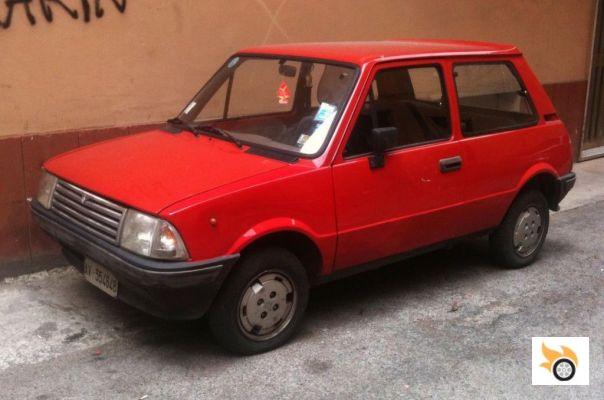
1990 was an important year for Innocenti because of two relatively important events. On the one hand, De Tomaso sold the brand to Fiat (Maserati would also be sold in 1993) and on the other hand, Daihatsu, the exclusive engine supplier, announced the end of the production of two-cylinder engines.
The inclusion of Innocenti in Fiat's orbit brought both a sweet and bitter taste to the brand. On the one hand there was the entry into a major automotive group but on the other hand one cannot forget that at that time Fiat had presented a profound update of the Lancia Y10 and wanted its model to remain the benchmark in terms of exclusivity and quality in the urban segment, so the first step taken by the Fiat group was to rename the vehicle and drastically reduce the offer.
In terms of nomenclature, the previous logic was abandoned and all models were renamed Innocenti Small. The MiniDue and MiniTre bodywork was reserved exclusively for the most basic two-cylinder L and LS models, sold as Innocenti Small L 500 and Innocenti Small LS 500 respectively. For its part, the long body of the previous 990 was offered exclusively with the more complete SE trim level, both with the two-cylinder engine and with the three-cylinder engine. In this case the commercial designations were Innocenti Small SE 500 and Small SE 900 respectively.
As can be seen in this new range, it seems that diesel models had no place in the plans of Fiat that had previously presented the Panda 1300D without much commercial success. Neither had room for models with the old automatic transmission or the sportier Turbo De Tomaso. In this case the reasons were a little more obvious. On the one hand Fiat, and therefore Lancia, had an advanced continuously variable gearbox designed exclusively for small engines. On the other hand, as far as the sportier models were concerned, the De Tomaso name referred to the former owner of Innocenti and Fiat, once again, did not want competition for its Lancia Y10 Turbo which, with 86 HP, could not match the performance of the Innocenti Turbo De Tomaso. It should also be remembered that this turbocharged Fiat engine had to be withdrawn from markets such as the German, Swiss or Austrian for not complying with emissions regulations, being replaced by a naturally aspirated engine of 1,301 cc - 78 hp that had further demonstrated the dynamic differences with the Innocenti Turbo De Tomaso.
The other issue Fiat had to deal with in order to maintain production of the Innocenti Small was Daihatsu's decision to stop producing two-cylinder engines. From this moment on, the Innocenti Small 500 started to use a new 659 cc three-cylinder block with the same power output. Unfortunately for Innocenti and for their potential customers, the combination of this engine with the longer (and heavier) bodywork made the Smart SE 500 model barely reach 120 km / h although in favor it has to be said that its reliability was far superior to that of the 548 cc engine. By the way, it is not that I was wrong with the name, it is simply that it was not changed.
Less commented is that from the first moment that Fiat had Innocenti under its orbit, the main idea was to replace the original Daihatsu engines by the already known "903" four-cylinder Fiat, but this would have forced to also replace the five-speed gearbox by another four-speed also Fiat and modifications to the frame, which we must not forget had been designed in the mid-50s, would have meant an exaggerated and hardly amortizable investment for the Fiat group.
It was precisely this lack of capacity of the old chassis to adopt Fiat technology that made Fiat cancel the production of the Small in 1993 for good, something that raised quite a few criticisms given that if there is something that characterizes the Fiat group is that when a model is no longer interesting for the European market, it moves its production to Latin America or South Asia. However, the Innocenti Small simply died.
To take advantage of the commercial pull that Innocenti still had, the brand name was used on several occasions in the 90s to market Fiat models in Europe from Latin American or Eastern European markets, always sold with quality levels far below those of any other Fiat and with nothing to do with Innocenti's past. These models include the Koral (a Yugoslavian evolution of the Fiat 127 from the 70s), the Elba (the family version of the Brazilian Fiat Uno, derived from the European one that was so successful in the 80s), the Mille-Clip (also a Polish version of the Fiat Uno from the 80s) or the Porter, which was simply a Piaggio Porter with Innocenti badges. By the way, this Piaggio Porter was (and is) made in collaboration with Daihatsu.

























